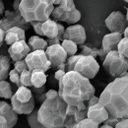
A research team from RMIT University, CSIRO Manufacturing, University of New South Wales, Graz University of Technology and the University of Adelaide, in Australia, have demonstrated an easy and efficient method to use nano MOFs for carrying large-size intact gene sets to be applied in gene therapy. Their study reports encapsulation of a complete gene-set in zeolitic imidazolate framework-8 (ZIF-8) MOFs and cellular expression of the gene delivered by the nano MOF composites, with data obtained at the MISTRAL beamline at the ALBA Synchrotron showing intracellular presence of the biocomposite particles.
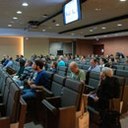
From 8th till 11th October, the IX AUSE Congress and IV ALBA User’s Meeting has been held at the ALBA Synchrotron. Around 150 delegates have participated in the event where scientific results obtained with synchrotron light as well as the present and future challenges of these facilities have been discussed.

Researchers from the Universidade de Santiago de Compostela, IKERBASQUE, Universidad de Zaragoza-CSIC, Instituto de Ciencia de Materiales de Madrid-CSIC, ESRF, and ALBA Synchrotron (BL29-BOREAS) have led a collaborative research, where they have exploited soft X-ray absorption spectroscopy as a tool for unveiling an electric-field induced crystallographic transformation between the conducting perovskite SrFeO3−δ and insulating brownmillerite SrFeO2.5 at room temperature. The method offers a new approach to design new functional materials with submicrometer spatial resolution.

Today, the 3rd ALBA Early-Stage Researcher Day has been celebrated and students doing their PhD at the ALBA Synchrotron presented the status of their projects in areas such as the use of synchrotron light as well as accelerators development. Moreover, the best presentation of the event has been awarded with the opportunity of visiting another synchrotron facility; this year the winner has been Anna Mandziak.
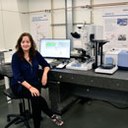
A research, led by the ALBA Synchrotron and funded by the European project NANOCANCER, has analysed the impact of nanoparticles in radiotherapy of glioma tumour cells.Combining radiotherapy with nanoparticles can increase the efficacy of cancer treatments. The experiment has been carried out at the MIRAS beamline of ALBA, devoted to infrared microspectroscopy.
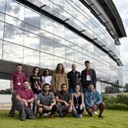
Twelve dual vocational training students are learning a job at ALBA during 2019-2020 academic year.

A team from the Germans Trias i Pujol Research Institute (IGTP) in Badalona is performing an experiment at the ALBA Synchrotron to obtain for the first time 3D images of cells with this disease. Friedreich's ataxia affects more than 3,000 people in Spain, causing serious mobility problems and other severe illnesses such as heart disease. At present there is no treatment to prevent or cure the disease.
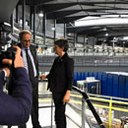
The President of the Generalitat de Catalunya, Mr. Quim Torra, has visited the ALBA Synchrotron today, led by the director, Caterina Biscari, and other members of the facility. At the end of the visit, he announced an investment aimed at opening a new microscopy centre that will host two high-performance electron microscopes at ALBA.

Primary school teachers can sign up their teams of 10-12 years old students for the second edition of Mision ALBA at www.misionalba.es. In the first year, more than 250 teachers and 7,000 students from all over the country took part in this educational project launched by the ALBA Synchrotron.

ALBA is a member of this platform aimed at showcasing updated information about beamlines and instruments available in European light sources. This initiative has been supported by European projects CALIPSO, EUCALL and CALIPSOplus.

Recently, researchers from two different departments of the UAB and the Materials Science Institute of Barcelona (CSIC), in collaboration with researchers from other institutions, have published two articles in the field of archeology that refute the common perception of thin-sections as an old-fashioned laboratory preparation and they have shown how this sample format conceived in the 19th century is still in force and can be adapted to the research and the new tools of the 21st century, such as the synchrotron facilities.

Accompanied by the director Caterina Biscari and the deputy director Gastón García, he has had the opportunity to know in detail the operation and future plans of the scientific facility located in the city of Cerdanyola.

Perovskites materials are promising candidates for next generation solar cells. However, their use is still limited by their instability within ambient conditions. Instead of absorbing all visible light and appearing black, some of these super materials preferentially form another structure which is yellow. Since only the black form is optically active, the current challenge is achieving stable black perovskites thin films suitable for real world optoelectronic devices. An international team of scientists, led by a group from KU Leuven in Belgium, have shone a light on this problem developing a new method to stabilize the black form introducing strain into the perovskite thin film using the glass substrate on which it sits. Synchrotron-based techniques at the ALBA Synchrotron and the European Synchrotron Radiation Facility were crucial for obtaining these results, published today in Science.

Researchers at the Universidade Federal do Rio Grande do Sul in Brazil in collaboration with the ALBA Synchrotron have performed the first detailed measurement of the strong metal-support interaction (SMSI) effect in Cu-Ni nanoparticles supported on cerium oxide. A better understanding of this effect is essential for developing smart catalysts that are more selective, stable and sustainable.
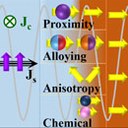
Researchers from the Institut de Ciència de Materials de Barcelona (ICMAB-CSIC) and ALBA Synchrotron have led a collaborative research, together with the Institut Català de Nanociència i Nanotecnologia (ICN2), the Dept. of Electronics and Biomedical Engineering (University of Barcelona) and CIC nanoGUNE (Donostia), where they have exploited X-ray absorption spectroscopy at the BOREAS beamline of ALBA for unveiling the optical and spin transport properties of transition metal oxides for photovoltaics and spintronics applications.
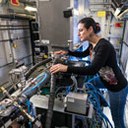
The Instituto de Tecnología Química has developed a new zeolite catalyst that remains stable at high temperature with potential industrial applications, such as the production of propylene, one of the chemical compounds most widely used worldwide. X-ray absorption experiments carried out at CLAESS beamline from ALBAto characterise the zeolite's materials.
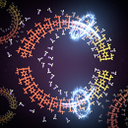
Researchers at IMDEA Nanociencia have developed an easily-made coordination polymer as an acetonitrile chemical sensor with a simple electro-optical readout. The studies have been carried out with synchrotron light techniques at the XALOC beamline in ALBA and also at the Advanced Light Source in Berkeley.
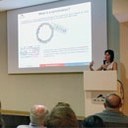
On July 4th, the Spanish Society of Cosmetic Chemists (SEQC) organized a visit for partners to the ALBA Synchrotron facility.

A research group has identified this material as a promising candidate for replacing toxic and flammable materials currently used in refrigerators, air conditioning or cooling systems. Part of the experiments were performed at the MSPD beamline, devoted to high-pressure X-ray powder diffraction.

The ALBA Open Day 2019, held last Saturday 29th of June, welcomed 2.425 visitors who were able to know in first-hand how the facility works and its main scientific applications.

On the 7th of June, the Manel Xifra awards ceremony was organised by Association of Industrial Engineers from Girona together with the company Comexi Group. The ALBA Synchrotron was awarded in the category of research centres.
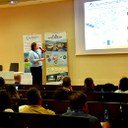
The 31st May, the Industrial office organised a workshop addressed to companies of the polymers industry sectors (plastics, adhesives, textiles, coatings, packaging, biomedicine, 3D printing materials, etc.). More than 60 participants had the opportunity to know deeply the applications of the synchrotron techniques to improve the properties of these materials, as well as the visit to ALBA's facilities.

The UAB, the UAB Research Park, Eurecat and B30 Association have signed an agreement with the ALBA Synchrotron and ESADECreapolis to include both institutions as new members of the b30 HUB.
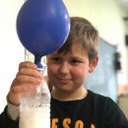
The first edition of the project, aimed at youngsters from 10 to 12, has become a great success since more than 170 schools from different regions of Spain have taken part in. Under the motto of “making visible, the invisible”, students have been solving scientific questions in their classrooms with the support of ALBA staff, who posed a set of experiments to accomplish the entire Mission. Both teachers and students have very positive feedback, highlighting the motivational part of the project.

A research team from the Centro de Investigación del Cáncer of the Universidad de Salamanca has obtained a detailed 3D image of the union between two hemidesmosomal proteins. The structure of this complex has been unveiled using XALOC beamline techniques, at the ALBA Synchrotron. The results, published in “Structure”, provide insights to understand how these epithelial adhesion structures are formed.
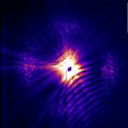
Profiting from the coherence of synchrotron light, scientists have performed both reciprocal and real-space observations of magnetic skyrmion lattice deformation in a chiral magnet Co8Zn8Mn4. The study of these materials is key for developing futures spintronic applications such as racetrack memory and logic devices.

On the 31st of May 2019, the ALBA Synchrotron is organising a workshop for companies of the polymers industry (plastics, adhesives, textiles, coatings, packaging, biomedicine, 3D printing materials, etc.) to inform about how their analysis with synchrotron light can improve the properties of these materials.

On Saturday 29th of June 2019, from 09:00 to 19:00, the ALBA Synchrotron celebrates its Open Day. Visitors can explore the facility and discover its applications, as well as participate in hands-on experiments and activities for all ages.
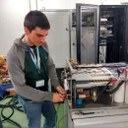
Till the 31st of May 2019, undergraduate students interested in doing an internship at ALBA can submit a proposal for covering one of the 13 available positions.
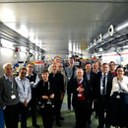
On the 15th and 16th of April 2019, the ALBA Synchrotron brought together teachers that are members of the advisory board of the Joint Universities Accelerator School (JUAS), a training programme in partnership with CERN and 16 European universities.
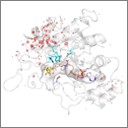
Synchrotron light has been used for the first time to simulate damages due to oxidative stress on the aldose reductase protein with the aim of obtaining its activated form. This form of the protein, related with some several diabetic complications, is insensitive to the drugs being developed, which hinders the treatment. ALBA researchers have shown that chemical changes suffered by the protein under oxidative stress are the cause of some drugs inefficacy in the attempt to block aldose reductase. The team of the Synchrotron suggests a new method for drugs design considering the changes in proteins under oxidative stress, like the ones involved in diseases such as cancer, Parkinson or Alzheimer.
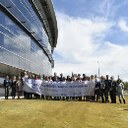
From 8th to 12th April the ALBA Synchrotron has hosted the 21st FLUKA course, which provides training for professionals working on the Monte Carlo simulations radiation transport. FLUKA is a fully integrated particle physics software simulation package. It has many applications in high energy experimental physics and engineering, shielding, detector and telescope design, cosmic ray studies, dosimetry, medical physics and radio-biology. The 32 attendants coming from all over the world have extended their knowledge about FLUKA software as well as had the opportunity to visit ALBA facility.
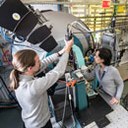
An international group of researchers has unveiled the transformation processes that take place during synthesis of lithium-rich layered oxides that are used as cathode materials in lithium-ion batteries. These low-cost materials showed very high capacity and speed, becoming promising candidates for the development of the electric vehicles and energy storage systems. Using synchrotron light, researchers were able to determine structural and chemical changes during the synthesis of these materials.

Researchers have shown that an everyday substance such as salt, NaCl, can be used to protect graphene layers and decouple them from a metallic substrate. It can then be easily removed in order to recover an intact graphene layer, turning this affordable ingredient into an enabler of a high-performing material. The experimental work, recently published in the journal 2D Materials, was carried out at the ALBA Synchrotron, working with the PEEM microscope of the CIRCE beamline, which was used both for the dissociation process and to characterize the sample.
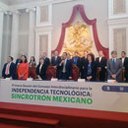
Caterina Biscari, director of the ALBA Synchrotron, has taken part in the first interdisciplinary council for building a synchrotron in the Mexican state of Hidalgo.
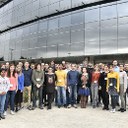
From 1st to 7th April the ALBA Synchrotron is hosting the European course Hercules, where 20 young researchers from all over the world will learn about synchrotron light science. During that week, ALBA staff provides training for these students in a practical way about the cutting edge techniques with synchrotron radiation, with applications in fields such us Biology, Chemistry, Physics or Hard & Soft Condensed Matter.
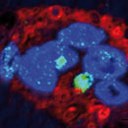
An international collaboration led by IDIBELL identifies the first disease caused by a mutation in myoglobin. At the MIRAS beamline of the ALBA Synchrotron they could demonstrate the presence of oxidized lipids in the damaged muscle cells.
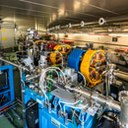
The ALBA storage ring has achieved a new record: delivering 100% of the beamtime in the first run of 2019.
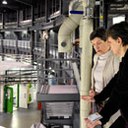
During her visit, she had the chance to know how ALBA works and the service that the facility is giving to the scientific community.

From 4th March 2019, Klaus Attenkofer is the Scientific director the ALBA Synchrotron, in charge of the Experiments division. He takes over the excellent job done by Miguel Ángel García Aranda, ALBA's scientific director since late 2012.
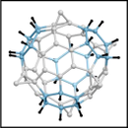
A research team from the IMDEA Nanociencia (Madrid) describes the first example of a non-porous dynamic crystalline fullerene C60 hexakis-adduct holding together by weak carbon-hydrogen van der Waals bonds interactions, also known as sticky fingers. Its dynamism allows single-crystal to single-crystal reaction by the inclusion of small molecules in smooth conditions, specifically in this work hydrazine molecules, allowing a toposelective hydrogenation of the buckyballs. The inclusion of the molecule has been illustrated by an X-ray single crystal diffraction performed at the ALBA Synchrotron, at the XALOC beamline.
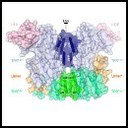
These results, published in Molecular Cell by a team from Biomedicine Institute of Valencia (IBV-CSIC), represent one step forward to unveil the communication systems among bacteriophages and their hosts. The structures of some molecules involved in these processes have been discovered in the XALOC beamline at the ALBA Synchrotron.
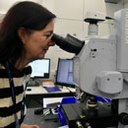
A new laser-based technique developed by the Institute of Materials Science (ICMAB-CSIC) uses urea, a common substance in the chemical industry and a low-cost alternative to noble metal co-catalyst, to enable a more efficient, one-step production of hybrid graphene-based organic-inorganic composite layers for environmental remediation, photodegradation of antibiotic contaminants from wastewater. The composition and chemical bonds of the urea-enriched thin layers were studied in detail using synchrotron light at the ALBA Synchrotron.

The director of the ALBA Synchrotron was recognised with the Narcís Monturiol Medal for her achievements contributing to scientific and technological progress in Catalonia.

The case of Portmán Bay, at the Spanish Mediterranean coast, is one of the most extreme cases in Europe causing great impact on the marine ecosystem by disposal of mine tailings. For more than 40 years, 60 million tonnes of mine waste were dumped directly into the sea, resulting from the open pit mining that took place in Sierra Minera in Cartagena. As a consequence, the Bay was literally filled with metal-rich artificial soil. Since 2014, a research group from the University of Barcelona (UB) has been studying Portmán Bay. Now, they have analysed samples of these sediments at ALBA because with synchrotron light they can obtain unprecedented information about the heavy metals contamination, such as arsenic.

Using synchrotron light, BASF chemical company together with scientists from the Universitat Politècnica de Catalunya (UPC) and the ALBA Synchrotron have determined how clays and superplasticizers interact in cement pastes. These results pave the way for improving the design of new superplasticizers more resilient to the clays that usually accompany the sands used in concretes as aggregates.
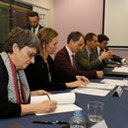
Science ministers from Portugal and Spain have visited today ALBA, motivated by a collaboration agreement that promotes the Portuguese scientific community using the ALBA Synchrotron and also includes a training program for Portuguese postdoctoral researchers at ALBA.
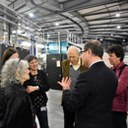
On 10th February 2019, Nobels Ada Yonath and Jerome Friedman, together with astronaut Ellen Baker, visited the ALBA Synchrotron.
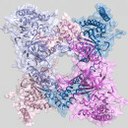
The three-dimensional structure of this enzyme has been obtained through synchrotron light from ALBA and has allowed the scientists from Universitat Autònoma de Barcelona to identify a new mechanism of regulation of an enzyme that controls the lifetime of cellular proteins. The study was published in the journal Nature Communications.





